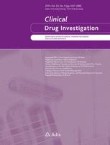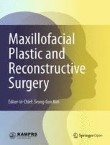
Abstract
Background and Objectives
Matrix metalloproteinases (MMPs) are proteases with different biological and pathological activities, and many have been linked to several diseases. Targeting individual MMPs may offer a safer therapeutic potential for several diseases. We assessed the safety, tolerability, and pharmacokinetics of FP-025, a novel, highly selective oral matrix metalloproteinase-12 inhibitor, in healthy subjects.
Methods
Two randomized, double-blind, placebo-controlled studies were conducted. Study I was a first-in-man study, evaluating eight single ascending doses (SADs) (50–800 mg) in two formulations: i.e., neat FP-025 in capsule (API-in-Capsule) and in an amorphous solid dispersion (ASD-in-Capsule) formulation. In Study II, three multiple ascending doses (MADs) (100, 200, and 400 mg, twice daily) of FP-025 (ASD-in-Capsule) were administered for 8 days, including a food-effect evaluation.
Results
Ninety-six subjects were dosed. Both formulations were well tolerated with one adverse event (AE) reported in the 800 mg API-in-Capsule SAD group and seven AEs throughout the MAD groups. The exposure to FP-025 was low with the API-in-Capsule formulation; it increased dose-dependently with the ASD-in-Capsule formulation, with which exposure to FP-025 increased in a greater-than-dose-proportional manner at lower doses (≤ 100 mg) but less proportionally at higher doses. The elimination half-life (t1/2) was between 6 (Study I) and 8 h (Study II). Accumulation of FP-025 was approximately 1.7-fold in the MAD study. Food intake delayed the rate of absorption, but without effect in the extent of absorption or bioavailability.
Conclusion
FP-025 was well tolerated and showed a favorable pharmacokinetic profile following ASD-in-Capsule dosing. Efficacy studies in target patient populations, including asthma, chronic obstructive pulmonary disease (COPD), and pulmonary fibrosis, are warranted.
Trial registration number: www.clinicaltrials.gov: NCT02238834 (Study I); NCT03304964 (Study II).
Trial registration date: Study I was registered on 12 September 2014 while study II was registered on 9 October 2017.







